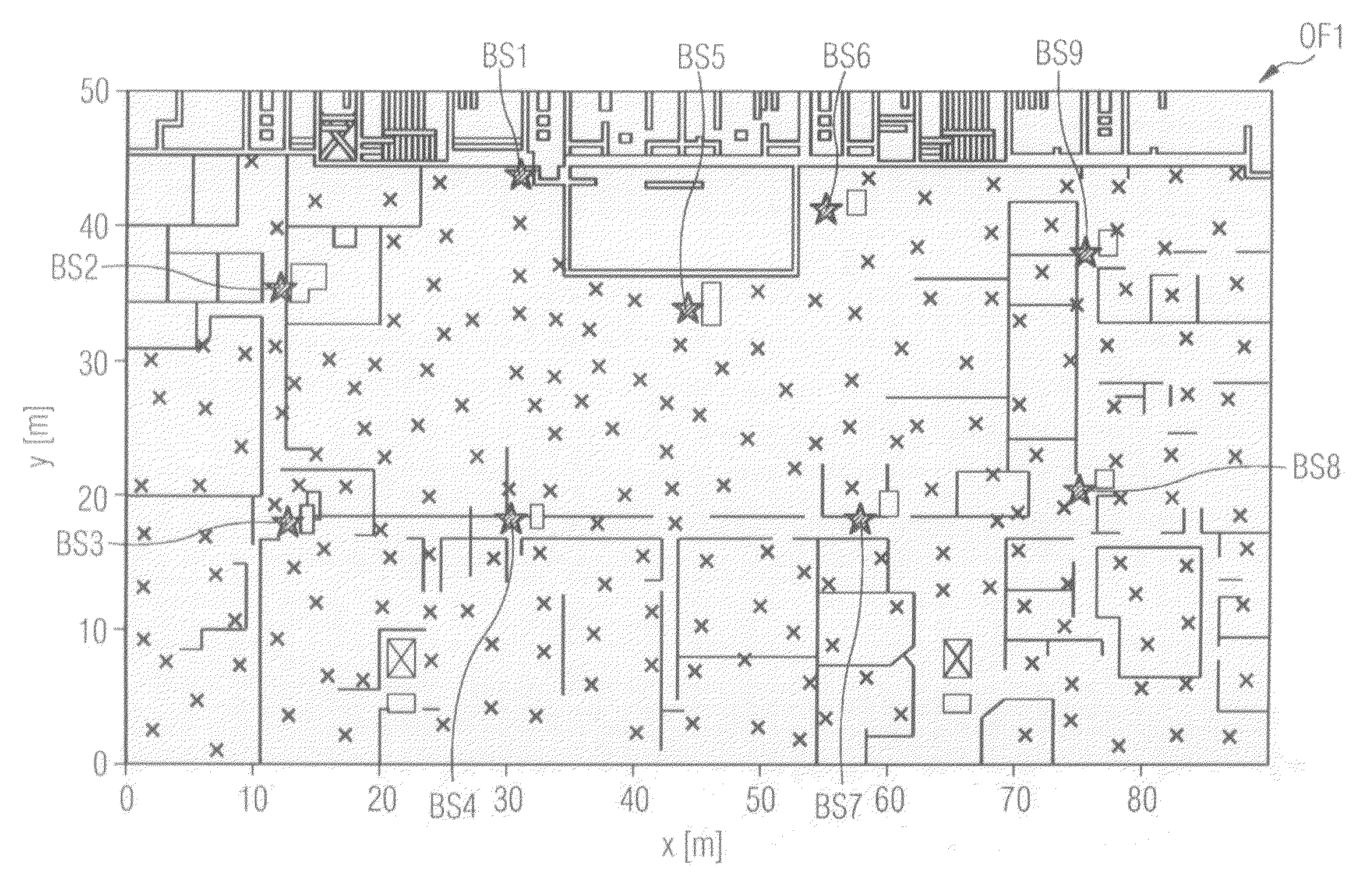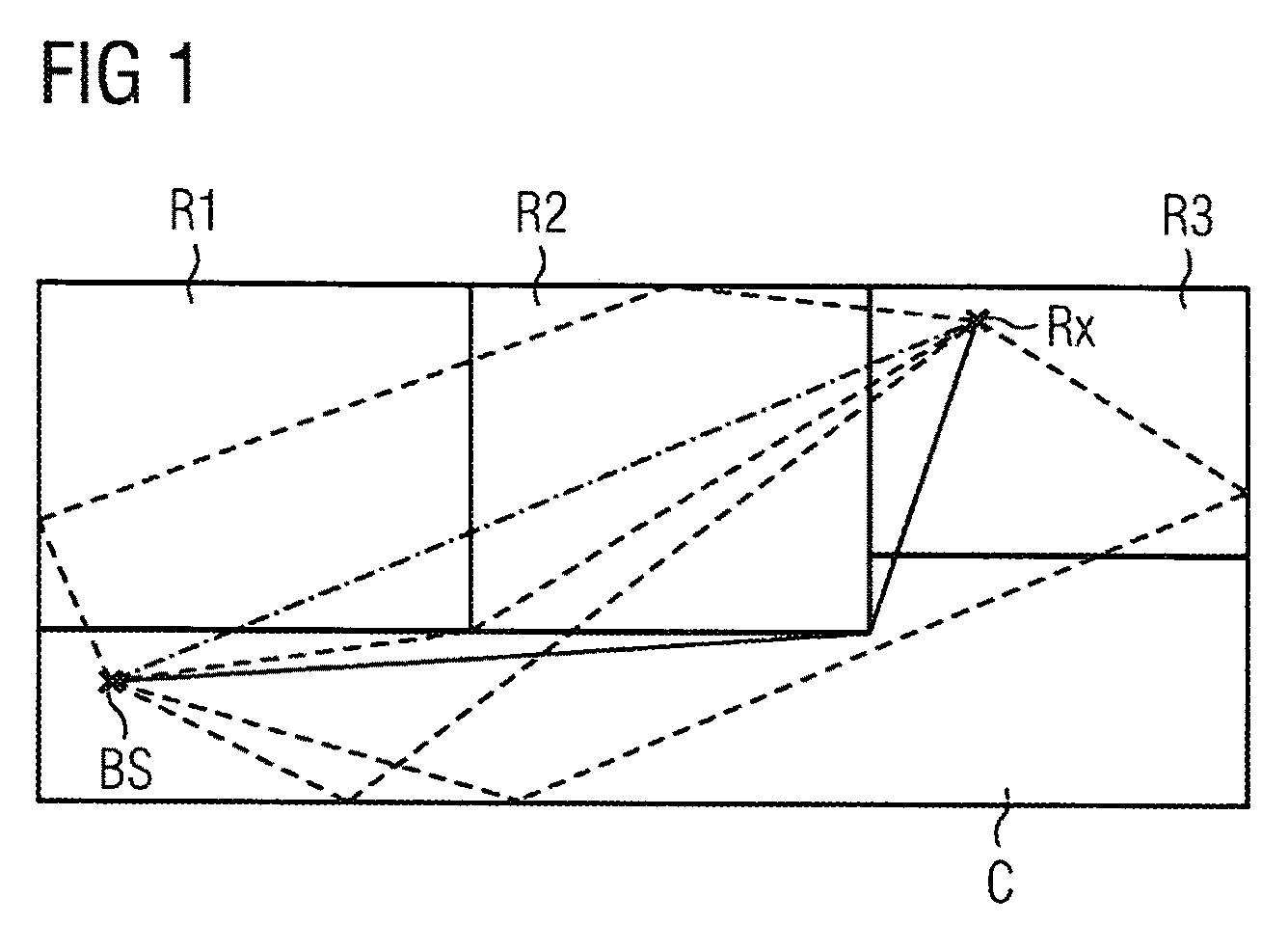Method and apparatus for determining the location of a mobile object
a mobile object and location technology, applied in direction finders using radio waves, transmission monitoring, instruments, etc., can solve the problems of labor- and cost-intensive calibration, significantly lower accuracy, and high cost, and achieve low cost, simple localization, and high accuracy
- Summary
- Abstract
- Description
- Claims
- Application Information
AI Technical Summary
Benefits of technology
Problems solved by technology
Method used
Image
Examples
Embodiment Construction
[0045]In the embodiments of the inventive method described below, a mobile object is considered which has at least one antenna, by means of which the field strengths of a plurality of base stations in the area surrounding the object can be received and measured. Here, each base station transmits wireless signals with a certain power (i.e. with a certain field-strength value). These wirelessly transmitted signals propagate in space, where they are reflected, bent and absorbed, notably by persons and other objects in the space, such as e.g. walls, machinery or office furniture, in the surrounding area.
[0046]In the exemplary embodiments of the inventive method described here, the propagation profile for each base station is described in the form of a two- or three-dimensional map, each position in the map being uniquely linked to a received field-strength value for each base station. The received field-strength value is also referred to below as the RSS value (RSS=received signal stren...
PUM
 Login to View More
Login to View More Abstract
Description
Claims
Application Information
 Login to View More
Login to View More - R&D Engineer
- R&D Manager
- IP Professional
- Industry Leading Data Capabilities
- Powerful AI technology
- Patent DNA Extraction
Browse by: Latest US Patents, China's latest patents, Technical Efficacy Thesaurus, Application Domain, Technology Topic, Popular Technical Reports.
© 2024 PatSnap. All rights reserved.Legal|Privacy policy|Modern Slavery Act Transparency Statement|Sitemap|About US| Contact US: help@patsnap.com










